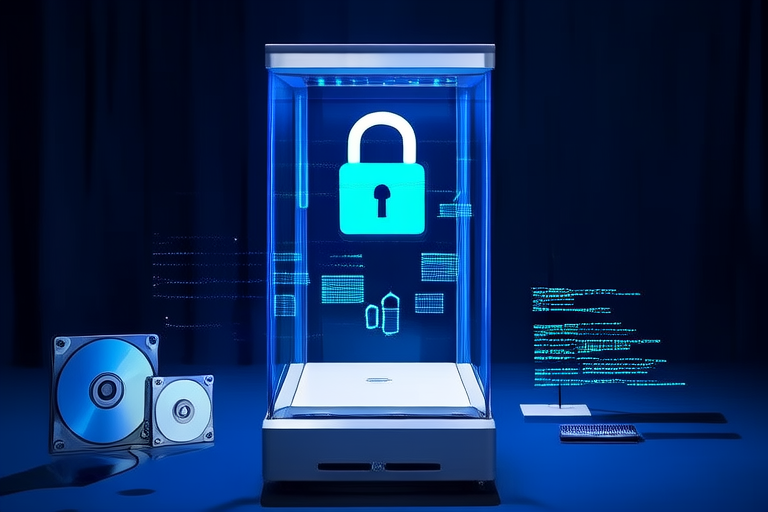“`html
Building a Robust Data Security Framework for Enterprises
Introduction
In today’s digital landscape, data security is more crucial than ever. Enterprises face an array of cyber threats that can compromise sensitive information, leading to significant financial losses and reputational damage. As cybercriminals become increasingly sophisticated, the need for a robust data security framework has never been more pressing. This article explores the essential elements of such a framework, providing actionable insights for enterprises looking to enhance their data security posture.
Understanding Data Security Risks
Data security threats come in various forms, from phishing attacks to advanced persistent threats. These threats can have devastating consequences for businesses, including financial losses, legal penalties, and damage to reputation. For instance, the Equifax breach in 2017 exposed the personal information of approximately 147 million individuals, resulting in a $700 million settlement and severe reputational harm.
- Phishing: Social engineering attacks that trick users into divulging sensitive information.
- Malware: Malicious software designed to disrupt, damage, or gain unauthorized access to systems.
- Ransomware: A type of malware that encrypts data and demands payment for decryption keys.
Key Components of a Robust Data Security Framework
A robust data security framework comprises several critical components that work together to protect enterprise data:
Access Controls and Authentication Mechanisms
Implementing strong access controls ensures that only authorized personnel can access sensitive data. Multi-factor authentication (MFA) adds an extra layer of security by requiring users to provide multiple forms of verification.
Encryption Methods
Encryption is essential for protecting data both at rest and in transit. Advanced encryption standards (AES) and public-key infrastructure (PKI) are commonly used to safeguard sensitive information.
Network Security Measures
Firewalls and intrusion detection systems (IDS) are vital for monitoring and controlling network traffic. They help prevent unauthorized access and detect potential security breaches.
Data Backup and Disaster Recovery Plans
Regular backups and disaster recovery plans ensure that enterprises can recover from data loss or system failures quickly. These plans should include regular testing and updates to ensure they remain effective.
Implementing a Data Security Framework
The implementation of a data security framework involves several key steps:
- Conducting a Thorough Risk Assessment: Identify potential vulnerabilities and assess the likelihood and impact of various threats.
- Developing Policies and Procedures: Establish clear guidelines and protocols for handling sensitive data.
- Training Employees: Educate staff on best practices for data security, including recognizing phishing attempts and secure password management.
- Regular Audits and Updates: Continuously monitor and update the framework to address emerging threats and technological advancements.
Continuous improvement is essential to staying ahead of evolving cyber threats. Regular reviews and updates ensure that the framework remains effective and up-to-date.
Compliance and Regulatory Considerations
Compliance with data protection regulations is not just a legal requirement but also a key element of data security. Regulations such as the General Data Protection Regulation (GDPR) and the California Consumer Privacy Act (CCPA) impose strict requirements on how enterprises handle personal data.
Compliance with these regulations enhances data security by ensuring that organizations follow best practices and maintain robust security measures. Aligning internal processes with regulatory requirements helps enterprises avoid legal penalties and protect their reputation.
Future Trends in Data Security
The field of data security is constantly evolving, with new technologies and approaches emerging regularly. Some of the most promising trends include:
Artificial Intelligence in Cybersecurity
AI-driven tools can analyze vast amounts of data to identify patterns and anomalies that may indicate security threats. Machine learning algorithms can also adapt to new threats, improving the effectiveness of security measures.
Blockchain Technology
Blockchain offers a decentralized and immutable ledger that can enhance data integrity and transparency. It is particularly useful for applications where trust and accountability are paramount.
Zero-Trust Architectures
A zero-trust model assumes that no user or device should be trusted by default, even if they are within the organization’s network. This approach requires continuous verification and validation, significantly reducing the risk of insider threats.
Conclusion
Building and maintaining a robust data security framework is essential for enterprises in today’s digital age. By understanding the risks, implementing comprehensive security measures, and staying compliant with regulations, organizations can protect themselves from cyber threats and mitigate potential damage.
Data security should be a priority for all enterprises, as it not only safeguards sensitive information but also enhances customer trust and business continuity. Continuous improvement and adaptation to new threats are key to ensuring long-term success in this rapidly evolving field.
“`




